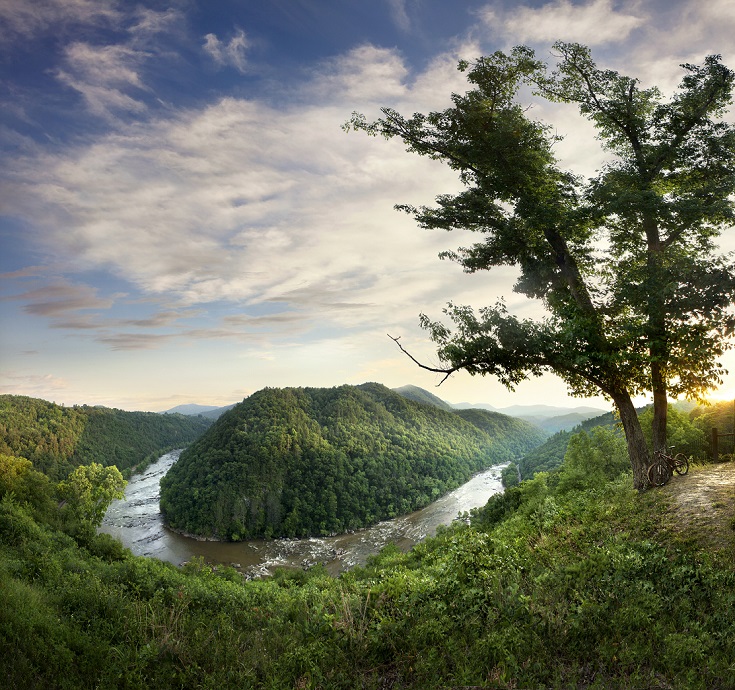North Carolina was the 12th state in the Union and the second to last to secede during the Civil War. It is where the Wright Brothers first took flight and Babe Ruth’s first homerun. It is home to beautiful beaches as well as gorgeous mountains and lakes. It is also the largest producer of sweet potatoes in America.

Lost Colony
One of the oldest mysteries in America happened in North Carolina, the disappearance of the entire Roanoke colony. The colony was established in 1587 by Sir Walter Raleigh on Roanoke Island. It was then a part of Virginia. It was the second attempt at a colony there and this time it was led by John White. There were 117 men, women and children who made up the colony. After a few months, White returned to England and had intended to go back with more supplies in 1588. However, the Anglo-Spanish War delayed his return until 1590. When he arrived, he found the colony completely abandoned and anything that could be carried away was. The only clue was the word CROATOAN carved on a fence stake. He thought this meant that they had relocated to Croatoan Island but was unable to confirm that. There are many theories on what exactly happened to them. Colonists from Jamestown years later heard reports that there had been a massacre there as well as that there were possibly Europeans among the Native Americans. However, there was no hard proof either way. Today, historians still have no idea what actually happened to the Lost Colony of Roanoke.
Biltmore Estate

The Biltmore Estate in Ashville, North Carolina is the largest privately owned house in the United States. It is 178,926 sq ft big. The giant mansion was built by George Washington Vanderbilt II between 1889 and 1895. Vanderbilt loved the area after visiting several times and decided to build his summer house there. Most of the Gilded-Age retreats were built in New York or Rhode Island but he loved it there. He bought around 700 parcels of land and had to build his own woodworking factory and brick kiln for the project. Biltmore Village was built nearby as well as a dairy farm. He traveled all over the world to purchase décor and furniture. The house was opened on Christmas Eve 1895. Today, Biltmore Estate is still owned by Vanderbilt’s descendants and is a major tourist attraction. It was made a National Historic Landmark in 1963.
Tar Heel State
North Carolina is known as the ‘Tar Heel State’ but what exactly is a Tar Heel? North Carolina was one of the main suppliers of naval stores during the colonial era. Navy stores are the tar, pitch and turpentine used to coat the bottom of wooden ships. The people who harvested it were called “Tar Boilers” and it was known to stick to those who worked with it. So, it eventually became “Tar Heels”. The term wasn’t in wide use until the Civil War. There are a few different stories on why it was picked up but they usually involve being a retort to another regiment making fun of one from North Carolina. The first time it appeared in print was in 1863, and it took off from there. The nickname eventually became embraced by those from North Carolina.
Miniature Golf
The first miniature golf course was created in North Carolina. When James Wells Barber was building his second home in Pinehurst, North Carolina he decided he wanted a small-scale golf course. He contracted another avid golfer, Edward H. Wiswell to build the miniature golf course in his garden. It was completed in 1919 and one of them said, “This’ll do” and it became known as Thistle Dhu. He had it built to entertain guests and they were certainly fascinated by it. While lawn golf had been around for a while this was something entirely new. It would be eventually featured in different articles and eventually many, many others would start to be opened up.
Pirates

One of the most infamous pirates in history was known to haunt the shores of North Carolina, Blackbeard. Born Edward Teach in Bristol, England he eventually found himself on the crew of another famous pirate, Benjamin Hornigold. Hornigold took the general pardon offered by the British Crown and retired in 1717. Teach then took over one of his ships and renamed it Queen Anne’s Revenge. He quickly became known as the most ruthless pirate around. He was known for both his cruelty and fearsome appearance. The Outer Banks of North Carolina were popular during the Golden Age of Piracy and Blackbeard was no exception to this. He also made a home in Bath, North Carolina after the governor Charles Eden pardoned him but he quickly grew restless. He eventually started up again going after nearby ships. The governor of Virginia Alexander Sportswood grew tired of this and sent out a crew of Naval Officers to capture him. They eventually caught him of the coast of Oracoke Island, North Carolina and killed him in 1718. Blackbeard’s term as a pirate captain may have been short but he left a lasting impression. Other famous pirates that were known to hunt the waters of North Carolina were Stede Bonnet, Calico Jack, Anne Bonny and Mary Read.
